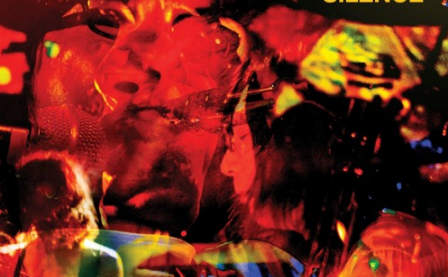The Silence opens with a song that Ghost were playing more than 10 years ago; not just here by vocalist and guitarist Masaki Batoh, but also by former Ghost members Kazuo Ogino, whose keyboards are crucial to The Silence’s sound, and drummer Futoshi Okano. Unsurprisingly, many of the traits of Ghost are here, from the deft balance between electric and often unconventional acoustic instrumentation (Bulgarian Tambura, for example) to the creatively rearranged cover songs that have featured on every Ghost album. And anything not originating in Ghost probably emerged over the course of Batoh’s solo career, as most of the songs on The Silence were originally written for a Batoh solo record. But The Silence offers something beyond being a Ghost or Batoh album under another name. It’s not just that Michio Kurihara’s “Killer Guitar” has been replaced by organ and Mellotron (as is quite evident on the opener “Lemon Iro No Cannabis”) or that the fluttering flutes that featured from time to time in Ghost take on a far greater prominence in The Silence. Beyond nodding more explicitly to the sounds of the early 70s than Ghost’s or Batoh’s work usually did, the real difference — the thing that marks The Silence out from these earlier projects — is a kind of poise and effortlessness, which is drawn out by the richness and immediacy of the production1.
Brain Pulse Music, Batoh’s last project before forming The Silence, was somber and often disorienting, haunted by the apparently incongruous combination of the deranged-scientist methods of tracks created from the brainwaves of subjects fitted with the titular machines and hushed requiems created using traditional Japanese instrumentation dedicated to the victims of the 2011 earthquake in Japan. That project was instigated in Ghost’s fallow period, between the time when they ceased to be productive and the eventual terse announcement of their dissolution last year. In fact, Batoh has said he was unsure if he wanted to — or even could — continue with music at all then (the Brain Pulse Machine was a part of the solution), but you wouldn’t know it listening to The Silence.
This might be clearest on the playful arrangement of the cover of Can song “Tango Whiskeyman,” which epitomizes how Batoh seems to have shaken off what haunted him before. In fact, the tone throughout the record is relaxed and confident, sometimes even cheerful. Even the more pensive moments (“Jewels In Tibet”) still glint and sparkle, and however subdued things get, they never fall into lethargy or moroseness.
That said, though the darker, more discordant side of Batoh’s vision has been largely toned down here, it can still be felt simmering beneath the surface. Another cover, the traditional “Black Is the Colour of My True Love’s Hair,” is where this side comes to the fore most evidently — and also the closest to a guitar freakout on the record. But it’s also substantially less weird than the version cited as its inspiration, Patty Waters’s truly disturbing “free jazz” rendition, and where improvising is still a key part of the record (“Triptycon”), the shamanic wildness it sometimes took on in Ghost has been reigned in for something more fluid and serene.
Likewise, given how neatly in focus everything feels on The Silence, the “spiritual” dimension of Ghost’s output — the latter’s smoke and ritual atmospheres and temple performances, feeding on a kind of mysteriousness and impenetrability — might seem to be somewhat diminished. It also seems as though Renaissance and Baroque (as opposed to Japanese traditional music) are more important references: The Silence feels, for want of a better word, more Western, or at least maybe more familiar than Ghost did, and hence maybe somewhat less alien. But there are gods here too, as Heraclitus is supposed to have said when some strangers were surprised to find him all-too-humanly warming himself by the hearth (or midden, according to some translations) — even if, in the bright lights of the 24-track all-analog studio, they need more “encouragement” than they might on wild hillsides or in murky caves. After all, to embark on a spot of lyrical “analysis,” it’s only “finally, under cruel torture” in “Götter im Exil” that the song’s interlocutor confesses to being Apollo, “God of music and magic.” And, for those that way inclined, perhaps the reference to Apollo is not accidental — perhaps it’s pointing to the ascendance of the Apollonian spirit of order (etc.) on The Silencerelative to Ghost’s more Dionysian (chaotic, ecstatic) mode.
Be that as it may, Batoh has always been one of the more singular and inventive voices in a scene not wanting for them, and The Silence strikes a remarkably optimistic note for the future and for further growth. As Batoh has pointed out, in their 30 years of existence, Ghost released nine albums; it has been a matter of months since The Silence were formed, and they’re already working on a third.
1. Given all the time I gleefully spend in the fractured digital nightmares of a lot of the most interesting recent music, I’m as skeptical as anyone of fetishizing the supposed “warmth” of analogue recordings — but, boy, it’s difficult to claim that The Silence doesn’t sound really good, really rich, really warm. Even when I’ve only listened to it in a digital format. ?
More about: Ghost, The Silence




